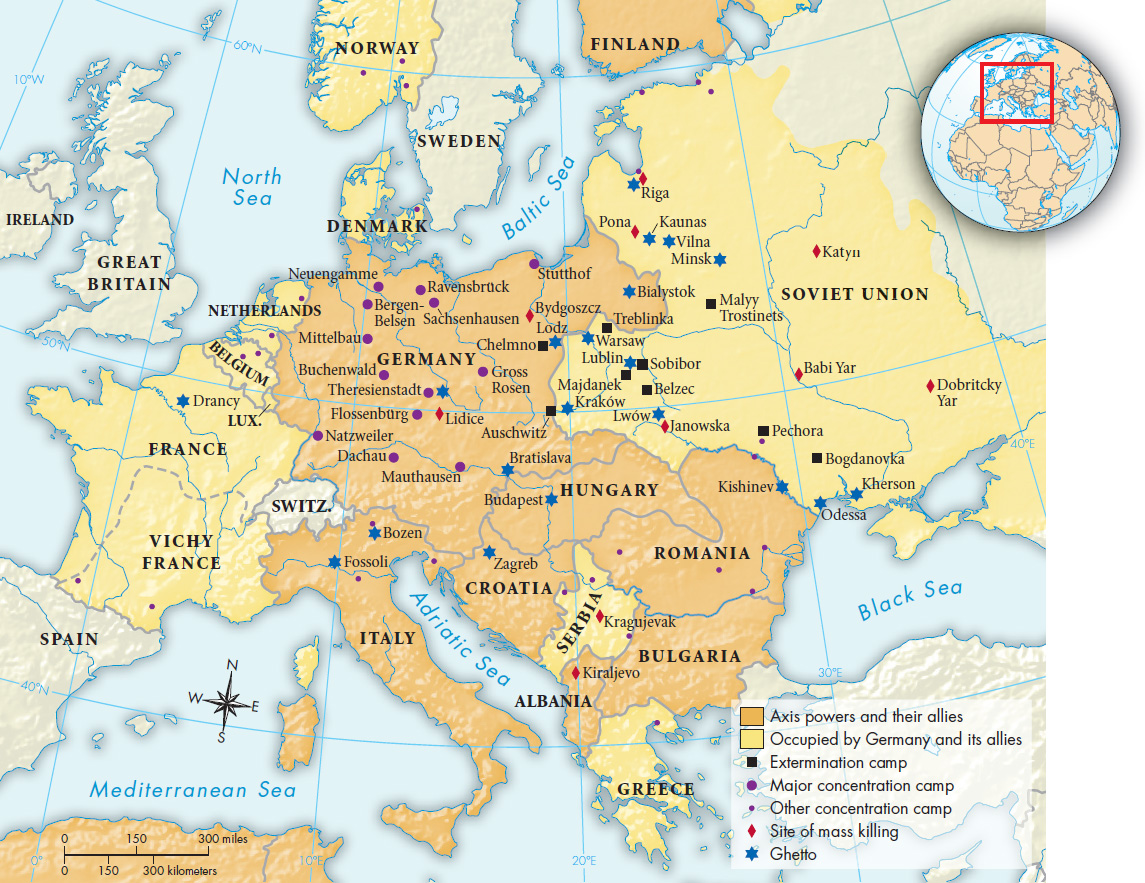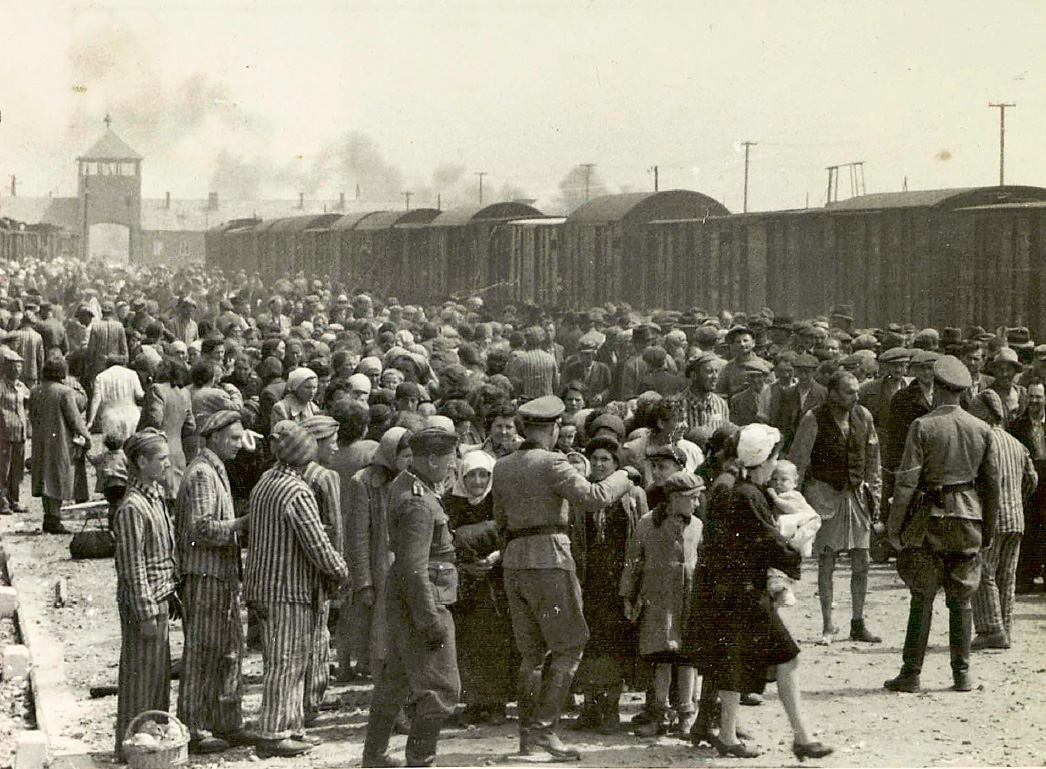A History of Western Society: Printed Page 923
A History of Western Society, Value Edition: Printed Page 925
The Holocaust
The ultimate abomination of Nazi racism was the condemnation of all European Jews and other peoples considered racially inferior to extreme racial persecution and then annihilation in the Holocaust, a great spasm of racially inspired mass murder.
As already described, the Nazis began to use social, legal, and economic means to persecute Jews and other “undesirable” groups immediately after taking power. Between 1938 and 1940, persecution turned deadly in the Nazi euthanasia (mercy killing) campaign, an important step toward genocide. Just as Germany began the war, some 70,000 people with physical and mental disabilities were forced into special hospitals, barracks, and camps. Deemed by Nazi administrators to be “unworthy lives” who might “pollute” the German race, they were murdered in cold blood. The victims were mostly ethnic Germans, and the euthanasia campaign was stopped after church leaders and ordinary families spoke out. The staff involved took what they learned in implementing this program with them to the extermination camps the Nazis would soon build in the east (Map 27.4).

The German victory over Poland in 1939 brought some 3 million Jews under Nazi control. Jews in German-occupied territories were soon forced to move into urban districts termed “ghettos.” In walled-off ghettos in cities large and small — two of the most important were in Warsaw and Lodz — hundreds of thousands of Polish Jews lived in crowded and unsanitary conditions, without real work or adequate sustenance. Over 500,000 people died under these conditions.
The racial violence reached new extremes when Germany invaded the Soviet Union in 1941. Three military death squads known as Special Task Forces (Einsatzgruppen) and other military units followed the advancing German armies. They moved systematically from town to town, shooting Jews and other target populations. The victims of these mobile killing units were often forced to dig their own graves in local woods or fields before they were shot. In this way the German armed forces murdered some 2 million civilians.
In late 1941 Hitler and the Nazi leadership, in some still-debated combination, ordered the SS to implement the mass murder of all Jews in Europe. What the Nazi leadership called the “final solution of the Jewish question” had begun. The Germans set up an industrialized killing machine that remains unparalleled, with an extensive network of concentration camps, industrial complexes, and railroad transport lines to imprison and murder Jews and other so-called undesirables, and to exploit their labor before they died. In the occupied east, the surviving residents of the ghettos were loaded onto trains and taken to camps such as Auschwitz-Birkenau, the best known of the Nazi killing centers, where over 1 million people — the vast majority of them Jews — were murdered in gas chambers. Some few were put to work as expendable laborers. The Jews of Germany and then of occupied western and central Europe were likewise rounded up, put on trains, and sent to the camps. Even after it was quite clear that Germany would lose the war, the killing continued.

The murderous attack on European Jews was the ultimate monstrosity of Nazi racism and racial imperialism. By 1945 the Nazis had killed about 6 million Jews and some 5 million other Europeans, including millions of ethnic Poles and Russian POWs. (See “Individuals in Society: Primo Levi.”) Who was responsible for this terrible crime? Historians continue to debate this critical question. Some lay the guilt on Hitler and the Nazi leadership, arguing that ordinary Germans had little knowledge of the extermination camps or were forced to participate by Nazi terror and totalitarian control. Other scholars conclude that far more Germans knew about and were at best indifferent to the fate of “racial inferiors.”
The question remains: what inspired those who actually worked in the killing machine — the “desk murderers” in Berlin who sent trains to the east, the soldiers who shot Jews in the Polish forests, the guards at Auschwitz? Some historians believe that widely shared anti-Semitism led “ordinary Germans” to become Hitler’s “willing executioners.” Others argue that heightened peer pressure, the desire to advance in the ranks, and the need to prove one’s strength under the most brutalizing wartime violence turned average Germans into reluctant killers. The conditioning of racist Nazi propaganda clearly played a role. Whatever the motivation, numerous Germans were somehow prepared to join the SS ideologues and perpetrate ever-greater crimes, from mistreatment to arrest to mass murder.7